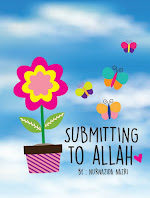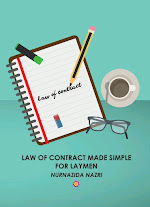I tend to learn more about this snowball technique when I started my PhD. But I think that I had been practising it all along, just maybe in the messy way, hahaha. Thanks to Dr Othman Talib who had showed us, the postgraduate students on how to implement this snowball technique in your reading so that it can help you to increase your reading materials a.k.a the footnotes and the bibliographies. :)
Literally, snowball starts with a small pack of snow get together and once you roll it over and over again on the snow itself, the ball will get bigger. Errr, do you get what I am trying to say here? The same goes to this technique for reading and research. You need few reading materials, articles from journal, newspaper cuttings or textbooks. Then you start to widen your reading and research area by using the snowball technique. Personally, I think that all law students must master this technique because it will help you to understand something better.
I get annoyed when I see that students only depend solely on the slides given by their lecturers. They treat these slides as their bible, bringing it everywhere but it is as clean as a whistle, except maybe their name written on the first page.
I had always mentioned this in class. As students, no matter what subject it is, you need to have your own notes. The slides given to you are the guidelines. You need your own references.
As the lecturers who are also going to be the examiners eventually, we will be delighted if the students can provide us with references that we had never discuss about in class. This proves that the students had done some extra reading on his own. You will definitely be given extra marks for that. For your own effort. This is where, the snowball technique in your reading and research and now making notes, are extremely important!
Take for example this article. If this is the first reference that you have, after scheming through the content, your attention must be directed to the footnotes. Notice I used the word scheming instead of reading? I will write a post on that later, why you need to learn the technique of scheming and not reading. Now, can you see the footnotes there. You already have 8 additional reading (footnote No. 20 to 27). This is your starting point, with no ending, hahaha. As you read the references given in the footnotes, you will notice that it will also expand your horizon.
OK, so you need to check all the 8 references listed in the footnotes. Start with the first one. Article 150 of the Federal Constitution was cited. Your job now is to have a look at Article 150 and its content. If possible, just download a copy of the Federal Constitution from the Internet. Write down the whole content of Article 150 as you understand it. Then go on to the next footnote.
In the list, Jayakumar is supposed to be next but it seems that I don't have a copy of that article with me now. So I will move to the case of N. Madhavan Nair.
Now, do you see the cases referred to in N. Madhavan Nair? Feel like crying now? Hahaha. 14 cases referred to! There goes your snowball, it's getting bigger and bigger. Do you see now how easy it is to grow your references? Which I don't understand why students keep on saying they don't know what to read or they don't have enough references. Well, of course, if your only reference is google and sometimes the wikipedia.
So basically, this is the snowball technique. Surprisingly, this technique will get you lost in the sea but you yourself are willing to be drown and refuse to be saved. There are just lots of things to scheme and write in your notes. And it gets more interesting as you go deep in the sea because you will learn lots of new things.
Good luck! ♡









0 Comments